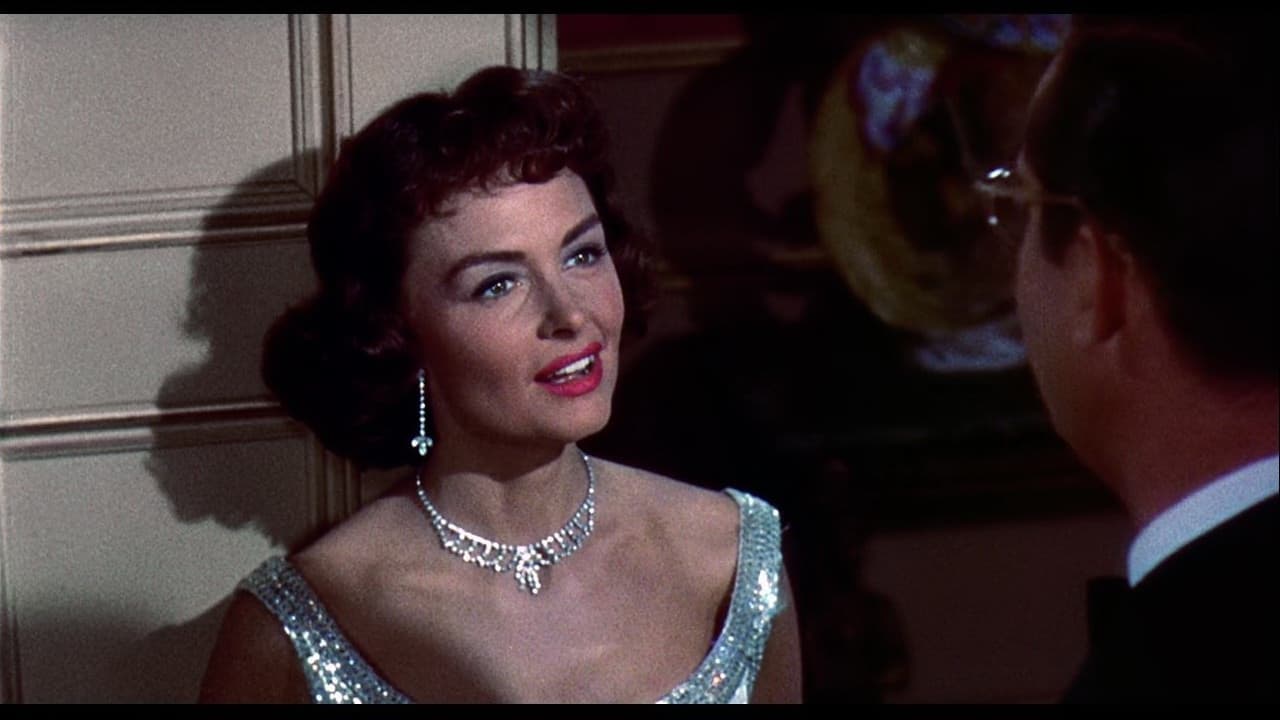

Writer, director Valantine Davies took on this musical challenge as a testimony to the legendary impresario Benny Goodman and what was then called 'Swing' music.' The film itself is called " The Benny Goodman Story " and it features the late great comic Steve Allen. The movie does a good job of incorporating the early life of the famed musician and the life-struggles he encountered. Striving from an early age to learn his instrument and then later to adapt it to create what he called a 'special' type of music for the era of Early Swing and later Jazz age. The movie does not lend itself any of Goodman's foibles or controversies as there were little in his life. Still it does take a few liberties with his personal history, but nothing which detracts from the established music which he help to initiate. Indeed, his ability to play his clarinet and entrance his audiences is what makes this movie and then the cast which includes Donna Reed, Berta Gersted and Barry Truex as Benny Goodman (at 16), is what marks this Bio-pic as a musical Classic and the late great Gene Cruppa on drums. In addition for any who love the legendary sounds of the Big Bands in the age which started them all, you can do no better than sit and enjoy this musical rendition which is a tribute to that era. Easily recommended. Well done.
... View MoreThe opening sequence with Papa and Mama Goodman and their kids shows us a slice of cozy urban ethnic life, but in fact Benny Goodman grew up in terrible circumstances, the ninth of 12 children in a poor family in a rotten neighborhood of Chicago. He was haunted all his life by the hard labor endured by his father in order to feed the family.And so it goes throughout this movie: the reality has been bled out of the story so that what's left is lifeless. In the film, black musicians like Teddy Wilson and Lionel Hampton just happen to join up with Goodman, when in fact it was almost unprecedented to have blacks and whites performing together, at least before white audiences, and certainly in the South, where the bands would tour. After Goodman set the precedent of working with blacks, black members of white bands still regularly endured all sorts of humiliations in the South, and not just there.It has been said that the soggy plot and Steve Allen's deadly performance can be overlooked because there is so much great music throughout the film. There is something to be said for that. But consider what was done in the final sequence--the 1938 Carnegie Hall concert. Yes, it was fun seeing the real Harry James, Ziggy Elman, and Gene Krupa perform. But we had to endure repeated cutaways to Goodman's mother and girlfriend, and the real focus of the sequence was on this sappy, conventional romantic situation rather than on the importance of the concert.I had just listened to a recording of the entire concert--introductions, setups, and applause included--prior to watching this movie. It was the Goodman orchestra at the peak of its powers, and the evening must have been electrifying. It certainly was a milestone in jazz history. Also present were other greats of jazz from the Ellington and Basie bands (even Basie himself at one point). Watching the chopped up portrayal of the concert in the film, I wished Donna Reed and the actress playing Mama Goodman would just disappear.And yet clearly Benny Goodman gave his stamp of approval for the film, providing all the clarinet music. I doubt that he needed the money. So go figure.
... View MoreIt is was interesting to figure out what footage was the movie and what footage was from the actual 1938 performance at Carnegie Hall. There are two ways to figure it out: watch the color of the piano and what type of shot is taken by the camera. In close up shots with Steve Allen as Benny, the piano is brown. In far away shots, the piano is black. The far away shots are the actual 1938 footage. And of course, if you see Steve Allen (the close up shots), it is the movie footage. Without knowing that the original 1938 performance was spliced in with the 1955 movie footage , the viewer might see this as a continuity error.Although Steve Allen was not a clarinetist, one can see by his "performance" that he went to a lot of trouble to look as if he was actually playing (spoiler: Benny Goodman himself was actually playing clarinet off camera with the other musicians in the movie). As a musician and music historian, I am often annoyed when an actor or actress pretends to play a musical instrument: his or her performance usually looks fake. Excellent movie for all musicians! Very seldom do you see movies with so many great performances. It was also terrific to see some very famous musicians like Gene Krupa and Harry James.
... View MoreThe Goodman story looks terribly contrived and schmaltzy here in enlightened 2000. Yet schmaltz was what Hollywood was all about in 1955. So Donna Reid smiles and simpers, black man Kid Ory walks unchallenged into an NBC studio (in 1937???) and you just know the movie will end with a "and they all lived happily ever after." But maybe the Hollywood of 55 wasn't that bad. There was no heavy breathing, no f-words, no bare butts but lots of superb music by now deceased masters. The ultimate test? My wife and I really enjoyed watching it! But that doesn't seem to be the reason they make movies these days.
... View More